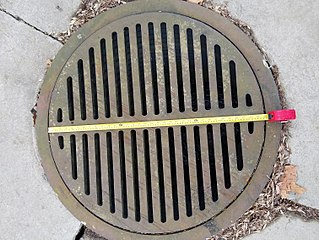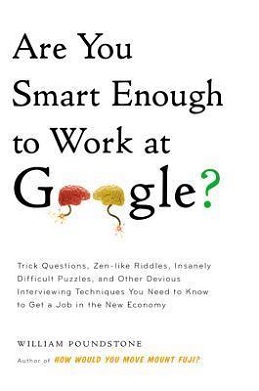Further information
Interview questions previously used by Microsoft
The questions asked during the Microsoft Interview are crafted to determine a candidate's problem solving, coding and design abilities. Eccentric questions (such as Which of the fifty states would you remove?) test a candidate's ability to come to a decision and articulate it. [4] Candidates answering questions should consider the use of technology in the present and future, and user scenarios. Some questions involve projects that the candidate has worked on in the past.
The Microsoft Interview is intended to seek out creative thinkers and those who can adapt their solutions to rapidly changing and dynamic scenarios.
Below is a small sample of questions that a candidate might be asked to answer during the second-round interview:
- What is the cosine law and how do you use this in real life situations?
- Design a GPS navigation unit for a hiker.
- Design a communication device for Canadian park rangers.
- Design a remote control for an automatic window-blind system.
- What method would you use to look up a word in a dictionary?
- What are examples of poorly designed software?
- Design an instant messaging system.
- Develop an algorithm for selecting objects in Visio.
- You have a linked list and don't know how long it is; how do you find the middle of it?
- Write code for finding a duplicate in an array.
- Write code that returns the length of a string without using any built-in functions.
- Reverse a singly linked list with and without using recursion.
- Reverse every word in a string (abc def becomes cba fed).
- Write a function that returns the angle between the hour and the minute hands of a clock, given input of the time.
- Write a function that takes a string consisting of numeral characters and returns all possible alpha character strings of same length as input that correspond to the keypad of a typical telephone.
- Imagine you have a closet full of shirts. It’s very hard to find a shirt. So what can you do to organize your shirts for easy retrieval?
- Switch every pair of words in a string ("ab cd ef gh" becomes "cd ab gh ef").
- Write the function for strstr function (finding a substring inside a string).
- Write a function to zero all duplicate values in an integer array. How would you test it?
- Write a function that compares two strings and returns a third string containing only the letters that appear in both.
- Find cycles in a singly linked list, using minimal storage.
- Shift all elements of a circular array by k bytes, using no extra memory.
Manhole cover question
The question of why manhole covers are typically round (in some countries) was made famous by Microsoft when they began asking it as a job-interview question. [5] [6] Originally meant as a psychological assessment of how one approaches a question with more than one correct answer, the problem has produced a number of alternative explanations, from the tautological ("Manhole covers are round because manholes are round.") [5] to the philosophical.
Reasons for the shape include:
- A round manhole cover cannot fall through its circular opening, whereas a square manhole cover may fall in if it were inserted diagonally in the hole. The existence of a "lip" holding up the lid means that the underlying hole is smaller than the cover, so that other shapes might suffice. (A Reuleaux triangle or other curve of constant width would also serve this purpose, but round covers are much easier to manufacture.)
- Round tubes are the strongest and most material-efficient shape against the compression of the earth around them, and so it is natural that the cover of a round tube assume a circular shape.
- A round manhole cover has a smaller surface than a square one, thus less material is needed to cast the manhole cover, meaning lower cost.
- The bearing surfaces of manhole frames and covers are machined to assure flatness and prevent them from becoming dislodged by traffic. Round castings are much easier to machine using a lathe.
- Circular covers do not need to be rotated to align with the manhole.
- A round manhole cover can be more easily moved by being rolled.
- A round manhole cover can be easily locked in place with a quarter turn (as is done in countries like France), which makes them hard to open without a special tool. Lockable covers do not have to be made as heavy, because traffic passing over them cannot lift them up by suction.
The practice of asking these sorts of so-called lateral thinking questions was formally discouraged at Microsoft by the mid-2000s. There were various reasons for the end of this practice but it was most obviously because the company was not hiring people to design manhole covers and there are much more direct ways to assess applicable skills than through questions of this type.
Interview resources
Microsoft provides a list of suggested reading to prepare for the interview. A sample is given below:
- Writing Solid Code, Steve Maguire.
- Code Complete , Steve McConnell.
- Testing Computer Software, Cem Kaner.
- All I Really Need to Know in Business I Learned at Microsoft, Julie Bick.
- Business @ the Speed of Thought , Bill Gates.
- The Road Ahead , Bill Gates.
- Algorithms in C, Robert Sedgewick, eds. Addison-Wesley, 1990.
- Essential .NET Vol 1 The Common Language Runtime, Don Box Addison-Wesley, 2003.
- Lessons Learned in Software Testing, Cem Kaner, James Bach, Bret Pettichord Wiley Computer Publishing, 2002.
- Mythical Man-Month, Anniversary Edition, Frederick P. Brooks, Jr. Addison-Wesley, 1995.
- Introduction to Algorithms Second Edition, Thomas H. Cormen, Charles E. Leiserson, Ronald L. Rivest, and Cliff Stein MIT Press, 2001.
- The Art of Computer Programming , Donald Knuth Addison-Wesley.
- How to Break Software, James Whittaker.
- How We Test Software at Microsoft, Alan Page, Ken Johnston, Bj Rollison.
- Cracking the Coding Interview, Gayle Laakmann McDowell
- Cracking the PM Interview: How to Land a Product Manager Job in Technology, Gayle Laakmann McDowell, Jackie Bavaro
- Decode and Conquer: Answers to Product Management Interviews, Lewis Lin






